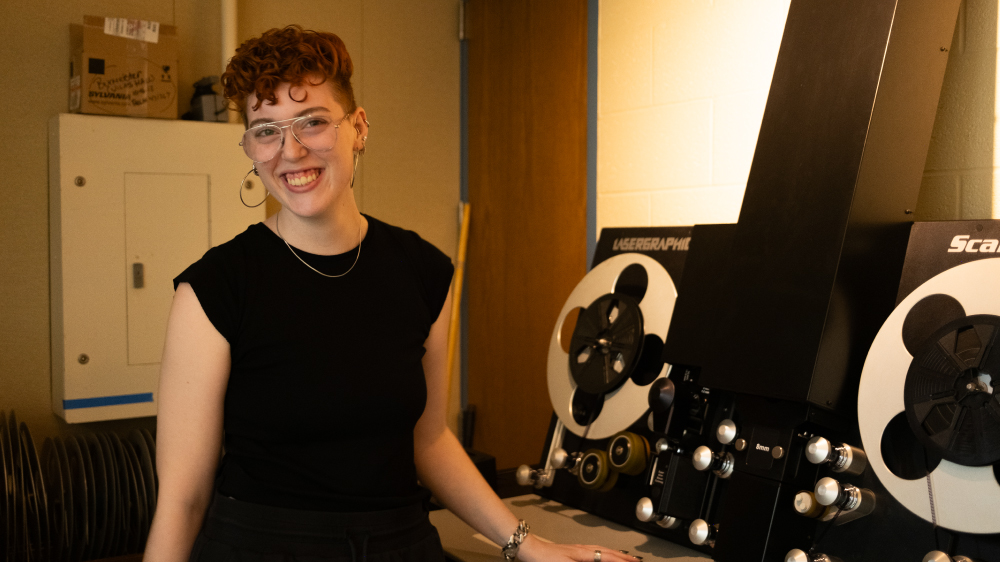
Tucked away in a dark hallway between Studio D and E in Vilas Hall, sits a room that brings stories back to life. In that room is Sophie Mayer, a Spring 2024 Communication Arts graduate, who currently works as a Media Preservationist for the department. Using the Lasergraphics ScanStation film scanner, gifted to the department in 2018 by the Communication Arts Partners, Mayer scans many types of media like old movies, TV shows, home videos, wedding tapes, and student films and transforms them into digital files, giving these stories a new life in the digital age.
As a child, Mayer collected old cameras, phones, and typewriters and has always been fascinated by old technology. When she came to UW-Madison, she wanted to take classes that focus on old film. However, these types of courses are no longer taught in Communication Arts as the filmmaking industry continues to move toward digital formats rather than physical film.
Mayer began looking for other opportunities to work with physical film and started working as a projectionist for the Cinematheque. Here, she worked with digital cinema packages, film equipment, and projectors, which made her fascination for old media grow. Later, Mayer reached out to the Wisconsin Center for Film and Theater Research (WCFTR) to see if they had any opportunities to work with film. She began volunteering with the WCFTR shortly after and started learning the basics of handling and splicing film. These opportunities opened the door to Mayer landing a specific media preservation student position offered through Communication Arts, which she continued part-time after graduating from UW–Madison.
“To me, [media preservation] feels like we’re creating new media,” Mayer said. “Most people don’t know how to use a projector or view their old films, so with home movies, when you give someone a new digital file, it’s like they’re seeing it for the first time. That is such a good feeling.”
Physical film deteriorates over time as it is exposed to moisture, light, heat, and humidity. Colors in the film start to fade and it can become warped and impossible to project. These factors make it essential to preserve as much of this media as possible, otherwise these pieces of history disappear. This idea has motivated Mayer to continue learning media preservation practices and work to save as much film and history as possible. “I get to be someone who preserves history for different groups of people, and that is a really important thing,” Mayer said.
Looking forward, Mayer will be attending New York University this upcoming fall to earn her master’s degree in Moving Image Archiving and Preservation.
“I am so grateful to Amanda Smith at the WCFTR and Boyd Hillestad (the Communication Arts Media Technician) for giving me the opportunity to work with film and teaching me basically everything I know about working with old media,” Mayer said. “Without them I wouldn’t have gained the experience that helped me get into grad school and be able to turn this interest into a potential career.”
We are excited to see where this next chapter takes Mayer as she works to preserve essential media and history not only for our program but for the world at large.